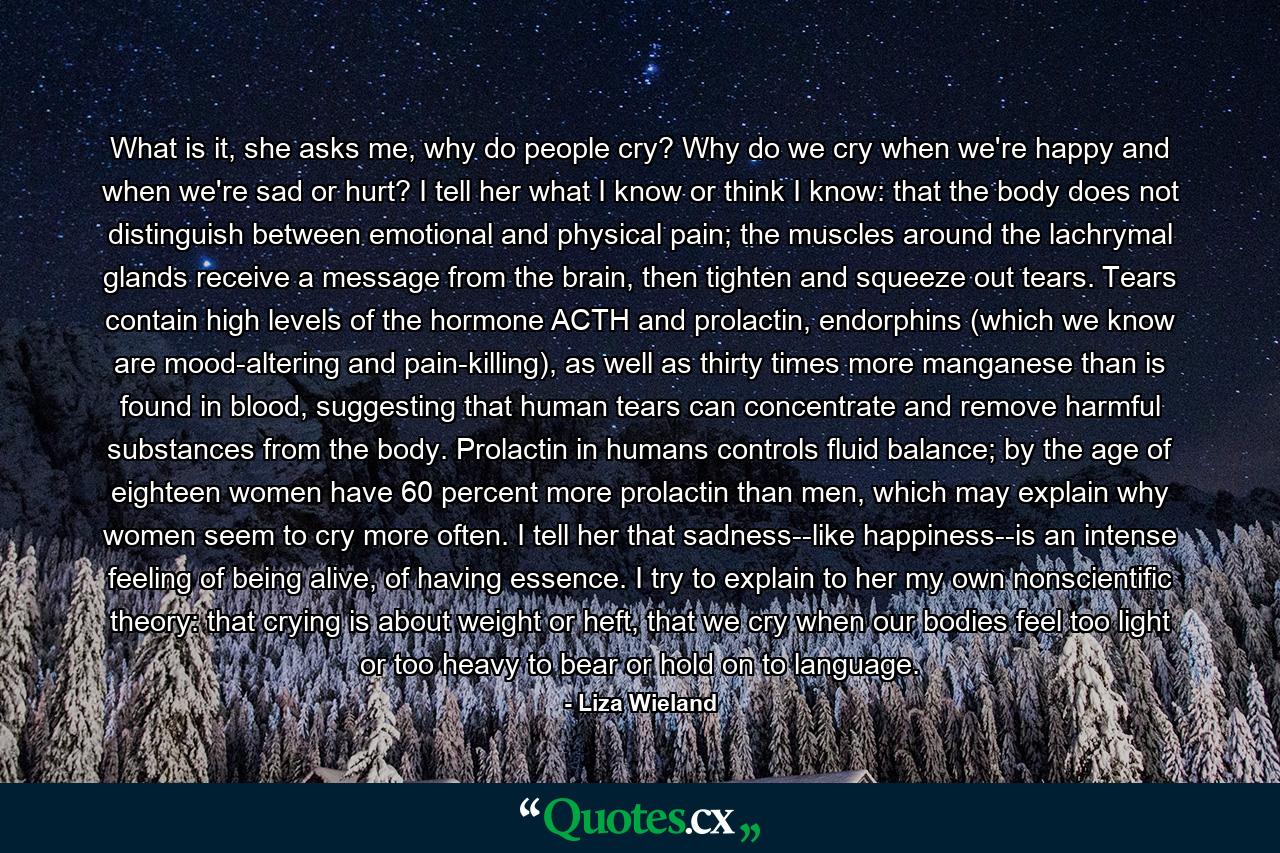What is it, she asks me, why do people cry? Why do we cry when we’re happy and when we’re sad or hurt? I tell her what I know or think I know: that the body does not distinguish between emotional and physical pain; the muscles around the lachrymal glands receive a message from the brain, then tighten and squeeze out tears. Tears contain high levels of the hormone ACTH and prolactin, endorphins (which we know are mood-altering and pain-killing), as well as thirty times more manganese than is found in blood, suggesting that human tears can concentrate and remove harmful substances from the body. Prolactin in humans controls fluid balance; by the age of eighteen women have 60 percent more prolactin than men, which may explain why women seem to cry more often. I tell her that sadness–like happiness–is an intense feeling of being alive, of having essence. I try to explain to her my own nonscientific theory: that crying is about weight or heft, that we cry when our bodies feel too light or too heavy to bear or hold on to language.
